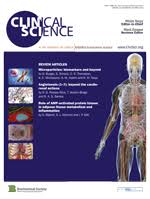You may need the vagus nerve to understand pathophysiology and to treat diseases
Categories
Keywords
Categories
Keywords
- Show all
- ADHD
- Anxiety/Panic
- Burnout
- Cancer
- Cardiovascular disease
- Chronic pain
- Cognitive function
- Cortisol/DHEA
- Costs
- Dementia
- Depressie
- Diabetes
- Global Coherence
- Hypertension
- Intuition & Consiousness
- Kids/Youth
- Leadership
- Meditation/Mindfulness
- Metabolic Syndrome
- Obesity/Eating disorder
- Pregnancy
- PTSD
- Resilience
- Schizophrenia
- Science HRV & Coherence
- Sleep quality & fatigue
- Social Coherence
- Stress
You may need the vagus nerve to understand pathophysiology and to treat diseases

Can different pathophysiological mechanisms and risk factors leading to various diseases be linked with altered transmission of signals by one common pathway? The present article provides evidence for the hypothesis that adequate vagal nerve activity reduces the risk ofmajor diseases, via common basic mechanisms and interim risk factors. These diseases include cardiovascular disease, cancer, Alzheimer’s disease and the metabolic syndrome. Three basic mechanisms contribute to such illnesses: local oxidative stress and DNA damage, inflammatory reactions and excessive sympathetic responses, all of which are inhibited by vagal nerve activity. Efferent vagal activity that can be non-invasively measured by HRV (heart rate variability), derived from an ECG, is inversely related to all three basic mechanisms, to various risk factors (e.g. diabetes and dyslipidaemia) and, more broadly, to the diseases as well. Finally, vagal activity is proposed to moderate the effects
of risk factors on developing such illnesses. By proposing an integrative neurobiological model of major diseases, identifying people at risk for, and treating patients with, such diseases may be done more efficiently. People with low HRV may be identified and subsequently treated by vagus nerve activation to possibly prevent or treat such illnesses. This proposed disease paradigm may have important preventative and therapeutic implications, whose clinical effects need to be investigated.
Download the complete article, click here